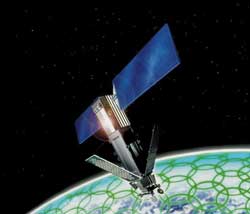Hi all,
IAA LECTURE: The next public lecture by the Irish Astronomical Association will be on Wed 4 March, at 7.30 p.m. in the Bell Lecture Theatre, Physics Building, QUB, by Kevin Nolan. Entitled "Mars, the Cosmic Stepping Stone", it will be based on his excellent new book of that title, just recently published. Kevin is the representative of The Planetary Society in Ireland, and lectures in astronomy and Physics at ITT in Dublin.
Admission is free, including light refreshments, and all are welcome.
Free parking is available on the main campus, beside the lecture theatre, in the evenings - entrance via University Square.
The IAA gratefully acknowledges the support of the Astrophysics and Planetary Science Division of the Department of Physics, QUB, in sponsoring these lectures.
CONJUNCTION: The crescent Moon and Venus are converging for a lovely conjunction on Friday evening, Feb. 27th. A great photo opportunity.
BCO Events for IYA 2009: Here’s a link to the Blackrock Castle Observatory programme from February to July giving the picture from BCO for the first 6 months. Highlights are below. See http://www.barrydesign.ie/bco.pdf.
Cosmic Chaos! Blackrock Castle Observatory celebrates the International Year of Astronomy 2009
The International Astronomical Union (IAU) launched 2009 as the International Year of Astronomy (IYA2009) under the theme, The Universe, Yours to Discover. IYA2009 marks the 400th anniversary of the first astronomical observation through a telescope by Galileo Galilei.
The Cork Institute of Technology manages Blackrock Castle Observatory and the facility is open 362 days with expected throughput of 50,000 visitors in 2009 confirming BCO as the premier public astronomy centre in the country.
FIRST FRIDAYS AT THE CASTLE MARCH 6 2009
MARS; A COSMIC STEPPING STONE
6-8pm Hands on Crafts: Design & Build a Martian Landing Craft in the Classroom. (ages 6 to 12)
8pm Lecture: ‘Mars; A Cosmic Stepping Stone’ Kevin Nolan I.T. Tallaght and author of ‘Mars: A Cosmic Stepping Stone’. Kevin Nolan gives the first public lecture celebrating his new book “Mars, A Cosmic Stepping Stone”. The book (and lecture at BCO) reveals how current exploration of Mars may soon play a role in helping uncover the origin of life on Earth and its cosmic abundance.
6-9.30 pm Viewing: Expert astronomers at Blackrock Castle Observatory and members of the Cork Astronomy Club will have telescopes in the Courtyard and are on hand to guide visitors in observing the night sky. The exhibit Cosmos at the Castle will be open late and free to the public. Bookings are now been taken for the free First Friday events on March 6th.
Members will have priority for these and all other events at BCO. Theatre capacity is 50 and Mars Lander workshops are for max. 25 so early booking is advised. No booking is required for observing sessions
THE STARDOME AND STORY TELLING
Astronomers and Story Tellers will narrate myths and legends of the skies bringing children and teachers into contact with the idea of our shared Multiverse through the StarDome, a portable planetarium. These events take place at Grand Parade Cork City Library from March 10th as part of the Year of the Constant Reader. Bookings through Cork City Library.
Saturdays from February 28th – April 4th 4.00-5.15pm
Astrophotography and Astronomy Theory Workshops.
Facilitated by local astronomer Dennis Walsh.
Classroom Sessions at BCO. €40 for 5 weeks. Limited Capacity.
Classes will be linked to observing sessions at First Fridays at the Castle.
Remember members enjoy a 10% discount on all BCO programmes!
CORK ST PATRICK'S FESTIVAL
Cork City Council has teamed up with BCO to celebrate the United Nations International Year of Astronomy. The theme of this year’s parade fittingly is Cosmic Chaos. Come along and join in the fun!
We are delighted to welcome back to Cork Dan Tani, NASA astronaut and Flight Engineer for the International Space Station. Dan Tani will be Grand Marshal at the Parade and will officially open the exhibit Capture the Cosmos on Saturday March 14th at Millennium Hall.
From Saturday 14 to Saturday 21 March, Capture the Cosmos, an exhibition of Cork schoolchildren’s astronomical prints will hang in City Hall.

